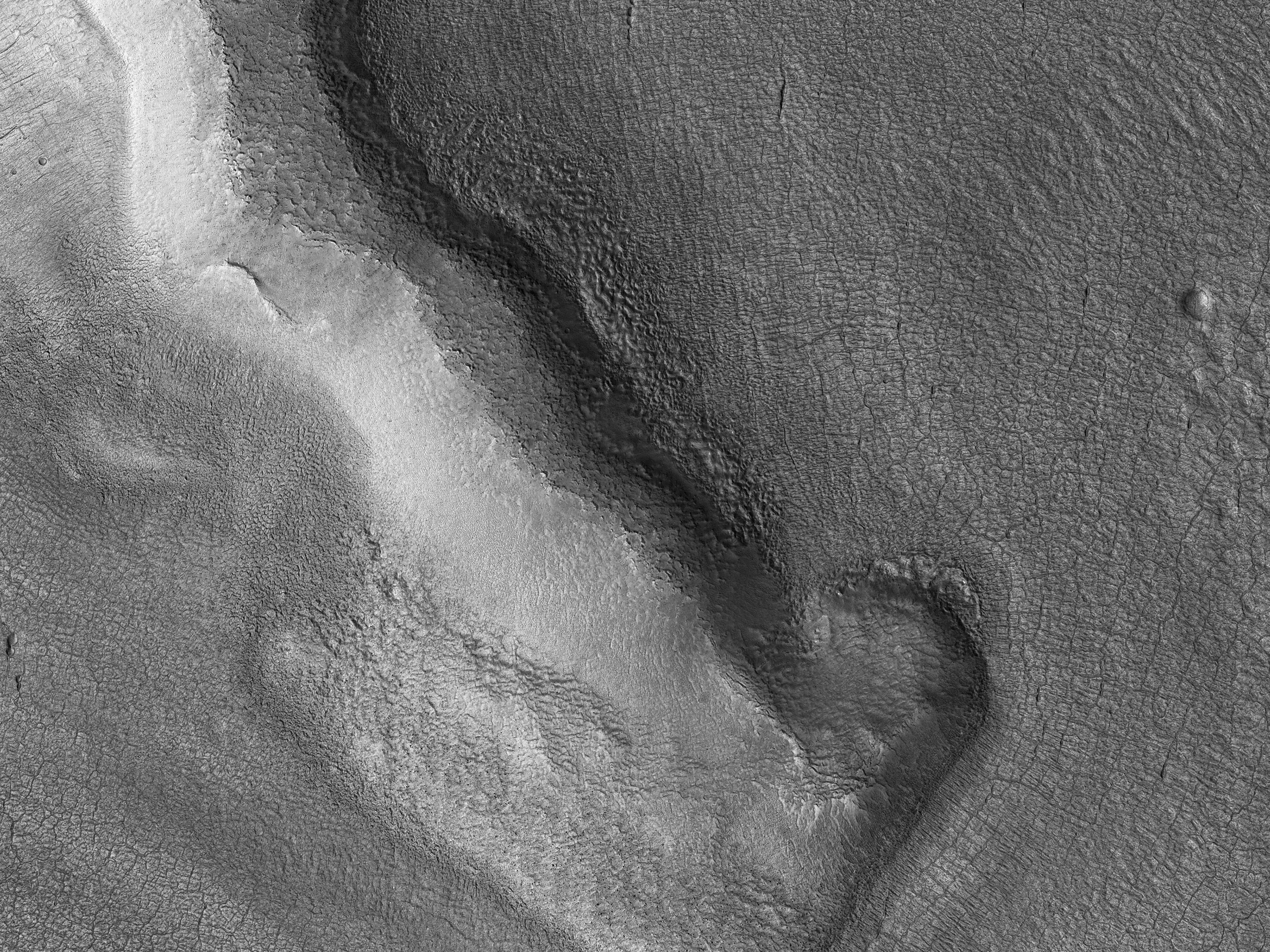During periods in Mars’ history when the planet had greater axial tilt, shifts in atmospheric circulation may have favored the extensive accumulation of snow in some locations. Protonilus Mensae is just such a site of extensive glaciation.
We can see a flow of material through the valleys between a complex of small mesas. Streamlines and flow fronts appear as subtle ridges. Some ridges appear perpendicular to the mesas indicating flow direction. Others appear concentric to the mesas and parallel to the valleys, where debris and now-underlying ice bunched up and moved down valley.
Deflation of the ice has led to a rich collection of small-scale features. Polygonal patterns of fractures and fissures may be related to a combination of thermal contraction cycles and overall subsidence of the surface. Larger fractures may be glacial crevasses, caused by differential flow rates in the underlying ice. Other more complex patterns of swirled pits and hummocks may result from the continual loss of unstable ice in the present-day dry climate.
ID:
ESP_068044_2240date: 31 January 2021
altitude: 298 km
https://uahirise.org/hipod/ESP_068044_2240
NASA/JPL-Caltech/University of Arizona
#Mars #science #NASA
